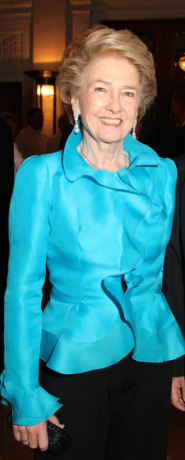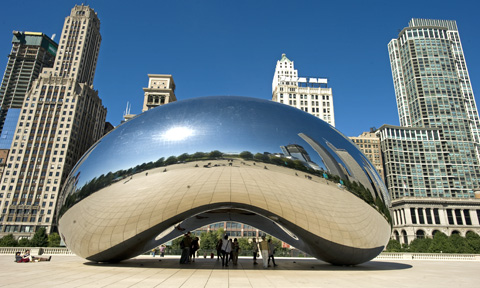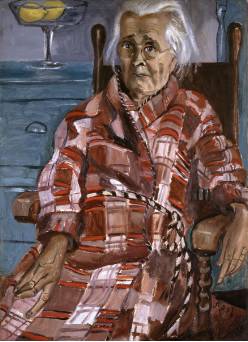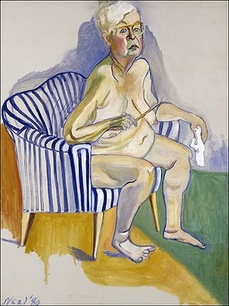Brandeis continues to make progress closing its budget gap, but as I wrote in a short article for The Art Newspaper’s April issue, which is now on newsstands, the Rose Museum continues to be in the administration’s crosshairs.
 Brandeis answered my questions in an email, issued by the Press Office, and this was the full exchange for the “money quote” in the article:
Brandeis answered my questions in an email, issued by the Press Office, and this was the full exchange for the “money quote” in the article:
Q: Will you confirm that trustee Meyer Koplow said in a recent meeting with faculty that “some of the solution will come from realizing value ultimately from some of the art at the Rose”?
A. Mr. Koplow’s statement is consistent with the University’s intent to realize value from a portion of the collection, if possible.
My article, which is not online, also goes into recent staff hirings at the Rose, including a collections manager, but not a director. One part of that actual exchange:
Q. Is the search committee also looking for a director? If not, why not? Who will be in charge?
A. Not currently. The university has a director of museum operations who’s doing an excellent job.
Nor will the Rose have a curator: it will use guest curators. As to what’s next:
Q. What is the administration’s current position on the future of the Rose?
A. The Rose will remain as a university museum open to the public and the university will continue implementing plans to more fully integrate the museum into the academic life of the university.
That sounds ominous, almost like a punishment.
But if recent reports are correct, the university’s financial situation is nowhere near as bad as the COO, Peter French, said it was in January, 2009. Then, he told me, for an article published by The Daily Beast, that the projected budget deficit was $79 million over the next six years, that the reserve fund was tapped out, and that the alternative to selling the Rose’s collection was closing 40 percent of the university’s buildings, reducing staff by an additional 30 percent, or firing 200 of its 360 faculty members.
None of those things have come to pass. And now, according to the Brandeis Hoot, a student-run newspaper,
The board of trustees approved a $356 million operating budget for fiscal year 2011 that, due to the Brandeis 2020 Committee’s academic cuts, will put the university on the path to a balanced operating budget by 2014.
The board took 13 percent ($11 million) of the university’s [reserve fund] in order to balance FY 2011’s budget…
The 18 academic cuts proposed in the Brandeis 2020 Committee’s report…will be “phased in”…
…the budget for fiscal years 2012 and 2013 will draw $6.3 million and $ 1.8 million from the [reserve fund], respectively….
This balanced budget means the 2020 cuts should mark the end of over a year of academic, budgetary and programing cuts that have plagued Brandeis since the beginning of the nationwide recession in fall 2008.
If so, why are sales from the Rose collection still on the table?
Photo Credit: Courtesy Brandeis University

 Last fall, FRAME announced the appointment of Edmund “Ted” Pillsbury to the job, succeeding art historian and curator Richard R. Brettell. But, as I wrote for the April issue of
Last fall, FRAME announced the appointment of Edmund “Ted” Pillsbury to the job, succeeding art historian and curator Richard R. Brettell. But, as I wrote for the April issue of  I like Anish Kapoor’s work; most of it anyway. But when I saw the design and the cost of the ArcelorMittal Orbital (left) that will go up in London for the Olympics, at a cost of £19.1, which is about $29 million, I paused. That’s a lot of money even if London Mayor Boris Johnson thankfully got billionaire Lakshmi Mittal to pony up £16 million of it.
I like Anish Kapoor’s work; most of it anyway. But when I saw the design and the cost of the ArcelorMittal Orbital (left) that will go up in London for the Olympics, at a cost of £19.1, which is about $29 million, I paused. That’s a lot of money even if London Mayor Boris Johnson thankfully got billionaire Lakshmi Mittal to pony up £16 million of it.  Photo Credits: Courtesy ARUP (top)
Photo Credits: Courtesy ARUP (top) I’d be there to see the Alice Neel exhibition that opened on Mar. 21 at the
I’d be there to see the Alice Neel exhibition that opened on Mar. 21 at the 